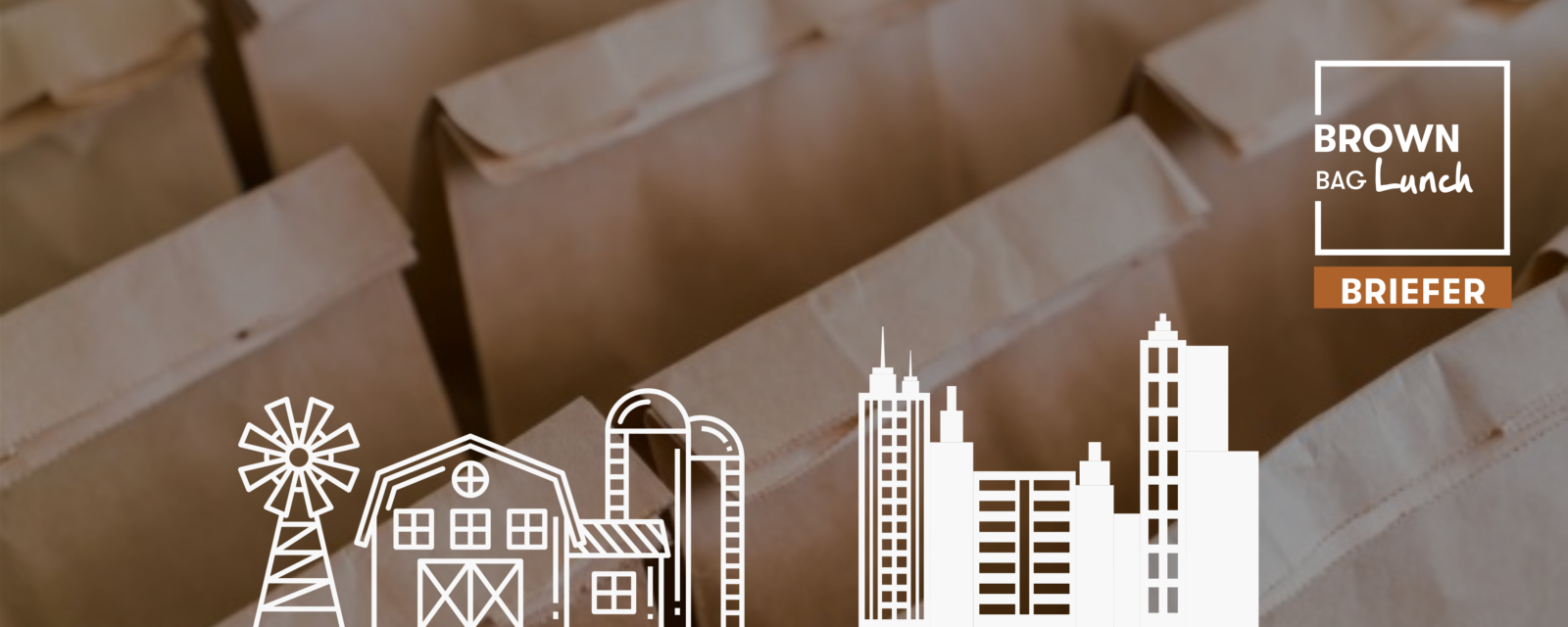
Bridging the Urban/Rural Divide | BBL Briefer #1
Our virtual Brown Bag Lunch (BBL) are hosted weekly on Thursdays. This newsletter is sent out every Friday and summarizes the key takeaways from the latest BBL.
About this week’s BBL host: Lisa Deacon – An entrepreneur and community builder with a lot to learn and share about pursuing social and climate justice in eastern rural Ontario. This 898 word newsletter is about a 3-minute read. Enjoy!
- Want this sent directly to your inbox? Sign up for the weekly BBL briefer here.
The Big Picture
Canada as a country is closely tied to ideas of space and place, with a large percentage of the population split between increasingly concentrated urban centers, and rural communities scattered across Canada’s vast terrain.
Yet, the idea of an urban/rural divide is very loaded, often exploited by political actors, whose language reinforces an idea of a cultural divide that does not accurately describe Canadians’ lived experiences.
This conversation expands on the questions and research surrounding the urban/rural divide. From the outset though, and as reminded to us by this BBL’s host, it is important to note that the perspective being provided in this briefer is dominated by white settler experience which presents some inherent limitations to how this discussion should be perceived.
A Pertinent Topic
The Pandemic has brought to the surface many questions among Canadians regarding the realities and rationale of urban/rural living. The housing crunch has left many unable to afford the hefty price of city housing, while the remote nature of pandemic work has many wondering whether being near urban centres is still necessary for their work.
Past Canadian elections, as well as the recent 2020 American election, have raised questions about the realities of socio-cultural and political division and have us asking what we don’t understand about urban/rural perspectives.
A Personal Story
Host Lisa’s first exposure to the barriers of engagement across rural and urban space came from her experience going to school on the rural outskirts east of London, Ontario.
There, the demographics of school populations were determined in part by whether children were living in urban or rural areas. For children attending the rural school like Lisa, classmates would be bussed in from exclusively rural areas surrounding the city, even when urban schools were nearer.
“So this was a way that I first really experienced an urban/rural divide… [creating questions like] why do my friends live in Delaware when that’s literally an hour and a half away from my house?”
In reflecting on her experience, this had Lisa wondering whether she’d have met “more than two people of color” in her entire grade 9 class, or whether she’d had more subjects to choose from?
These experiences also encouraged her to look further into the research on the rural/urban divide in Canada.
So what does contemporary research say about the urban/rural divide.
Firstly, it’s a very binary buzz term. Research on the idea is filled with criticism of the terminology, claiming people are often opportunistic in using the term for political reasons. This only acts to strain relationships by having people understand themselves through this rural/urban binary.
Statistics Canada uses ‘rural’ to define any area of Canada that is outside of settlements with 1,000 or more inhabitants in population. Yet, this definition could be seen as incomplete as according to that definition, Nunavut is one of the most ‘rural’ areas in Canada.
- Many would challenge this terminology and rather say that the territory is one of the most ‘remote’ places in Canada, as their lived experience differs greatly to Canadians who live 45 minutes outside of a large urban center.
Another problematic issue: political stereotypes emphasize a political division between urban and rural areas when in fact research shows that cities are very diverse in character between themselves. Evidence shows that cities are more likely to skew in certain political directions based on their regional or provincial location versus the common idea that all cities and rural areas vote a certain way.
Where does the divide take place?
There are many different ways in which people perceive the divide. Most recently, the idea of the digital divide has come to the fore, with the need for high speed internet during the pandemic shining a spotlight on lack of access in rural areas.
Health and service issues are also prevalent and have also been amplified by the fact that there exist different degrees to which people can access certain services and infrastructure based on their geographical location.
One of the most interesting aspects of urban/rural realities is the idea of the cultural divide. This reflects a boundary in society that separates communities whose socio-economic structures and opportunities for success… are so different that they have substantially different perspectives.
The virtual barrier caused by cultural differences can hinder interactions and harmonious exchange between people of different cultures. Large divides may discourage groups from seeking to understand the other party’s point of view, as differences between the groups may be seen as unchangeable. Such gaps may, in turn, inhibit efforts made to reach a consensus between these groups.
- This makes us think about the US election and whether or not we can communicate across these divides. Research from Pew in the US found that the majority of American urban and rural dwellers felt that ‘the other’ looked down upon their lifestyle – about 2/3 of each were in agreement with that statement.
The Bottom Line
Despite the existence of differences in lived experiences, there is still much more that brings Canadians together. According to a recent Environics report, on issues like the environment, refugee welcome, domestic security spending, redistribution of wealth, bilingualism and multiculturalism – the majority of Canadians, whether rural or urban, are more in agreement than is widely understood.